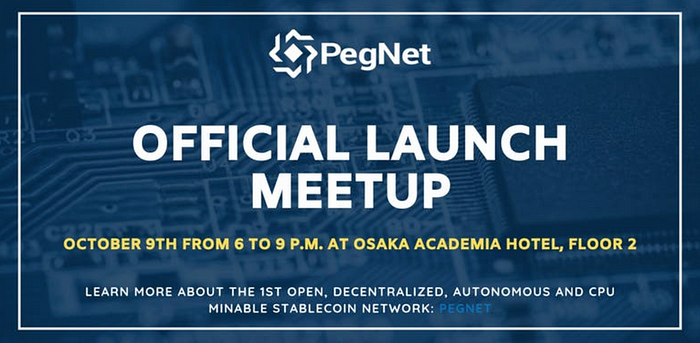100 Times The Hashpower = 100 Times The Security
Why hashpower is the key to securing the new decentralized world

Why You Should Care About The Hashrate
I’ve been excitedly posting about the rising hashpower on PegNet the last few months, but given not everyone was there for the early days of Bitcoin or Ethereum I thought it would be worth while to back up and explain why the total hashrate of a decentralized system is so important.
It all comes down to the term “cost of corruption”. In other words, what is the financial or other cost to an attacker to mess with a blockchain or other proof of work based Dapp. You may also know a similar term “51% Attack” which refers to the fact that in many blockchains an attacker would need 51% of the hashpower in order slow down transactions or otherwise undermine a blockchain’s operations.
So if an attacker needs 51% of the hashrate in a decentralized system, what is the cost to buy that amount of hashrate becomes your “cost of corruption”.
If a blockchain has miners only contributing a small amount of hashpower to it, say $1,000 worth, then an attacker would be able to undermine the operations of that blockchain for a little more than $1,000.
This was a common topic in the early days of Bitcoin. Why would anyone be confident in sending for example, $1 Billion USD of BTC across the network, if the network is only secured by less than $1 Billion USD worth of mining power.
So what we saw was a gradual increase in total value being sent over the network as users became more confident that the cost to attack the network increased.
This created a virtuous cycle where the increase in value being sent in the network increased the value of BTC, which in turn increased the reward for the miners, which allowed them to increase their hashrate and in turn the greater security gave users more confidence to send larger amounts of value and so on.
To the point today where $20 Billion per day is common for BTC volumes and $30 Billion per day is common for Ethereum (including USDT volumes which are mostly sent via the Ethereum blockchain). That’s $7.3 Trillion USD in annual value transfers for BTC and $10.9 Trillion USD in annual value transfers for ETH! That’s some serious money crossing these decentralized rails. All secured by massive hashpower.

So back to PegNet’s recent launch. Proof of Work is used to secure the price data on PegNet, so users can convert different pegged assets at the current market price. When a user wants to turn $1,500 of pUSD into 1 ounce of pGold they trigger the conversion in their wallet and the protocol references the price in the current block (every 10 minutes) published by the miners. Therefore the “cost of corruption” in the case of PegNet is in references to the cost for an attacker to mess with the conversion prices in the system. Its a bit more complicated than this as the PegNet software looks for prices outside the median and excludes them, but for simplicity let’s just say if an attacker had more than 51% of the hashrate they could try and mess with the PegNet prices.
On August 19th the first day the hashrate was about 5.7 Million Hashes per Second (abbreviated Mh/s). This was fairly small and represented around a 285 “miners”. Each “miner” defined here as a fairly standard laptop or desktop computer doing about 20,000 hashes per second.
Competition kicked in and community rushed in to increase their mining power in order to earn some of the 5,000 PEG per block reward. Within a few weeks the network stabilized at around 30 Mh/s, or about 1,500 miners online. Meaning cost of corruption for PegNet would have been the time, energy, and money to set up around 1,500 miners (computers).

On October 7th the PegNet was upgraded to allow for conversions and transfers of pegged assets, after reaching the milestone of having more than $100,000 USD of pegged assets (pFCT) live in the system.
Having a price for PEG and the ability to send around the pegged assets in the system, set off a new wave of interest from users and miners. The hash rate began to grow quickly and as of November 7th the hashrate contributed by miners on the PegNet system passed 596 Mh/s, 100 TIMES growth during the first 80 days after its launch on August 19th 2019.
This new hashrate means there are now about 29,800 miners now mining on the PegNet system.
As the hashrate continues to increase it offers users more and more confidence in the accuracy of the prices and security of the PegNet system. Value secured on the PegNet is now passed $500,000 USD worth, or 5X when it passed its first milestone 30 days ago.
It seems the virtuous cycle of proof of work is taking hold for PegNet.
In short, this is why I’m excited to highlight the growth of the hashrate and its importance to the success of this decentralized new world. Come join the fun.

